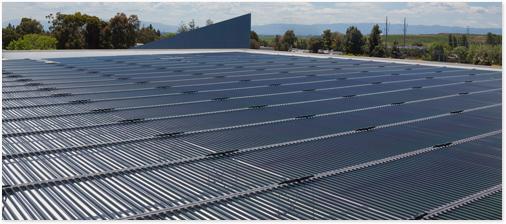The USDA recently announced a $91M loan guarantee for Cool Planet’s biofuel and biochar facility in Louisiana. Loan guarantees from the US government are a critical way for early stage companies to reduce their cost of capital for capital-intensive projects. Without loan guarantees, private banks would charge high premiums on debt to compensate them for the technology and scale-up risks inherent in first-of-a-kind project â€" and these capital costs can ruin project economics.

Photo: “U.S. Dept. of Agriculture Secretary Tom Vilsack (l) greets Cool Planet CEO Howard Janzen (r) prior to the announcement that Cool Planet has been awarded a $91 million dollar USDA loan guarantee†Source: [link]
So on the one hand, Cool Planet’s loan guarantee is fantastic news for the CDR field. Cool Planet’s proposed facility will provide enormous help in learning how to make biochar at industrial scales in a way that could help make a material impact on removing carbon from the atmosphere. If Cool Planet is able to sell their biochar as a fertilizer additive, for example, they could help sequester considerable amounts of carbon in soils.
On the other hand, loan guarantees like the one Cool Planet has received are not without their risks. The collapse of Solyndra in the DOE’s loan guarantee program provides an important lesson: that even though well over 90% of the DOE’s projects in their loan guarantee portfolio fully repaid their loans, the failure of a single company (i.e Solyndra) had incredibly damaging effects to the public perception of government support for the entire field clean energy. If unexpected challenges confront Cool Planet and they have to default on their loan, the entire biofuels and biochar field risks getting unfairly tarred with the same brush. Further loan guarantee funding opportunities could then lose political support, holding back the industry unfairly.

Photo: Solyndra’s bankruptcy had far reaching effects on political perception of clean energy technologies. Source [link]
That said, Cool Planet is primarily a biofuel play, so any potential failure might not reflect entirely on the biochar field. And success of the facility could do wonders for the biochar industry. But it is important to understand the downside risk of failure of this particular loan to the CDR field. Loan guarantees could become a useful and pervasive tool for catalyzing the development of large scale CDR projects at some point in the future. So it is important to develop the business and scientific case for CDR as much as possible now so as to defend against any potential loan defaults early in the development cycle for CDR approaches.

Authored by:
Noah Deich
Noah Deich is a professional in the carbon removal field with six years of clean energy and sustainability consulting experience. Noah currently works part-time as a consultant for the Virgin Earth Challenge, is pursuing his MBA from the Haas School of Business at UC Berkeley, and writes a blog dedicated to carbon removal (carbonremoval.wordpress.com). Prior to Haas, Noah spent three years ...
No comments:
Post a Comment